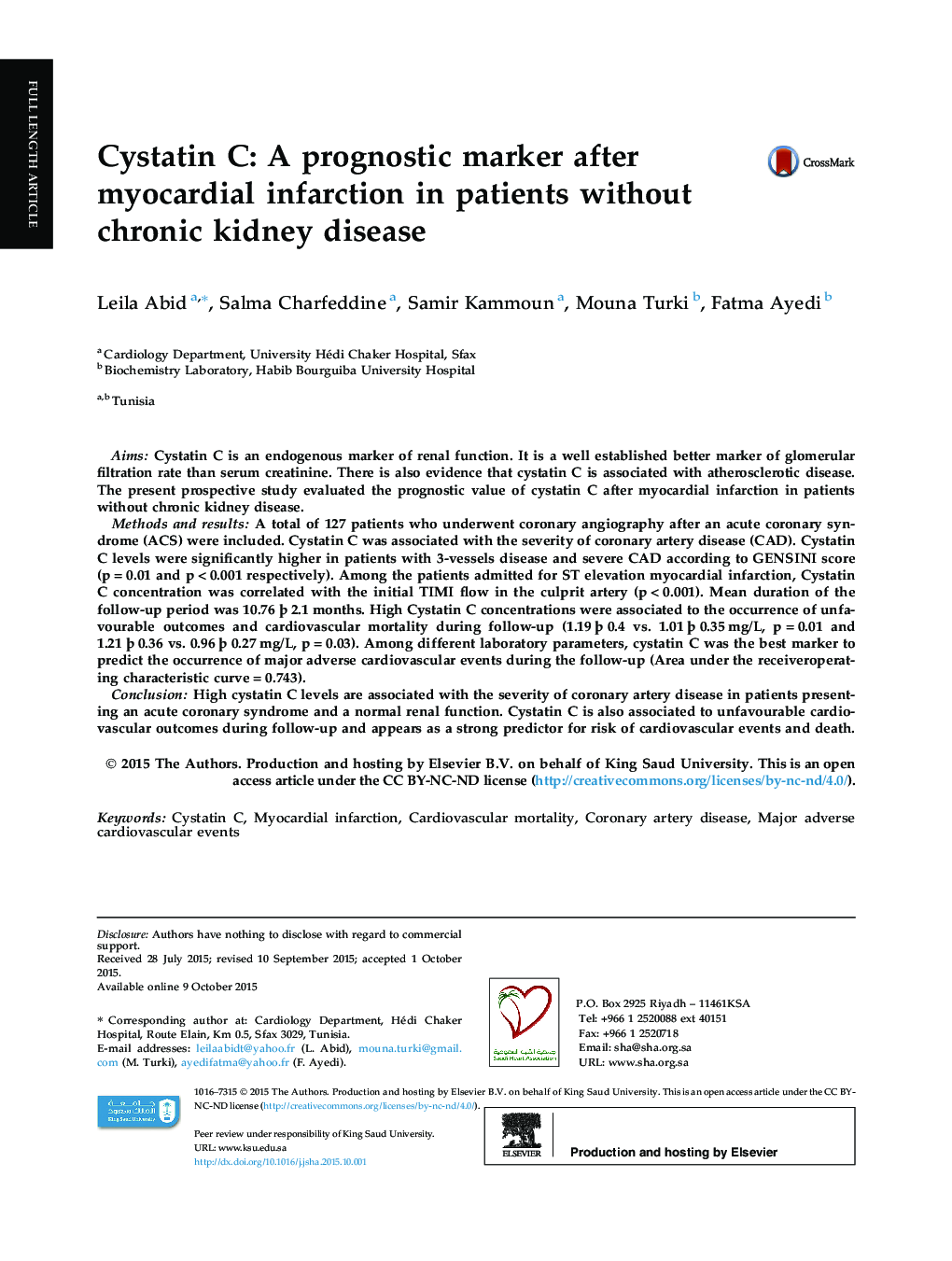| کد مقاله | کد نشریه | سال انتشار | مقاله انگلیسی | نسخه تمام متن |
|---|---|---|---|---|
| 2977655 | 1578508 | 2016 | 8 صفحه PDF | دانلود رایگان |
AimsCystatin C is an endogenous marker of renal function. It is a well established better marker of glomerular filtration rate than serum creatinine. There is also evidence that cystatin C is associated with atherosclerotic disease. The present prospective study evaluated the prognostic value of cystatin C after myocardial infarction in patients without chronic kidney disease.Methods and resultsA total of 127 patients who underwent coronary angiography after an acute coronary syndrome (ACS) were included. Cystatin C was associated with the severity of coronary artery disease (CAD). Cystatin C levels were significantly higher in patients with 3-vessels disease and severe CAD according to GENSINI score (p = 0.01 and p < 0.001 respectively). Among the patients admitted for ST elevation myocardial infarction, Cystatin C concentration was correlated with the initial TIMI flow in the culprit artery (p < 0.001). Mean duration of the follow-up period was 10.76 ± 2.1 months. High Cystatin C concentrations were associated to the occurrence of unfavourable outcomes and cardiovascular mortality during follow-up (1.19 ± 0.4 vs. 1.01 ± 0.35 mg/L, p = 0.01 and 1.21 ± 0.36 vs. 0.96 ± 0.27 mg/L, p = 0.03). Among different laboratory parameters, cystatin C was the best marker to predict the occurrence of major adverse cardiovascular events during the follow-up (Area under the receiveroperating characteristic curve = 0.743).ConclusionHigh cystatin C levels are associated with the severity of coronary artery disease in patients presenting an acute coronary syndrome and a normal renal function. Cystatin C is also associated to unfavourable cardiovascular outcomes during follow-up and appears as a strong predictor for risk of cardiovascular events and death.
Journal: Journal of the Saudi Heart Association - Volume 28, Issue 3, July 2016, Pages 144–151
